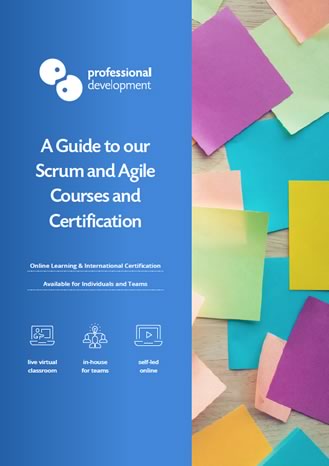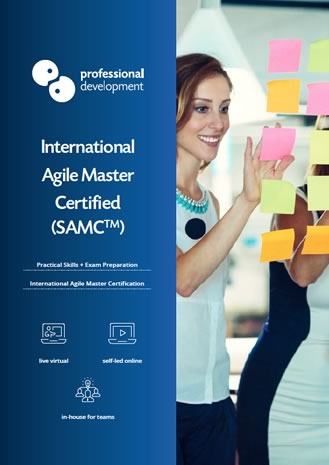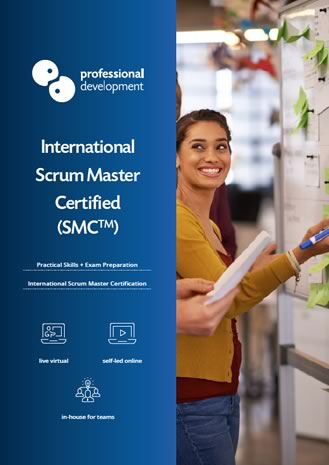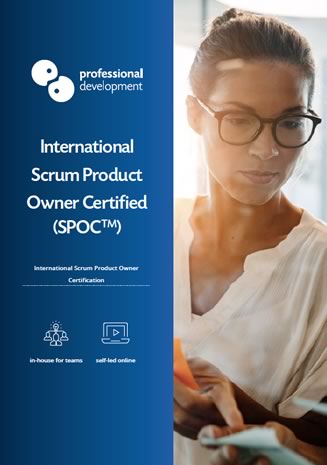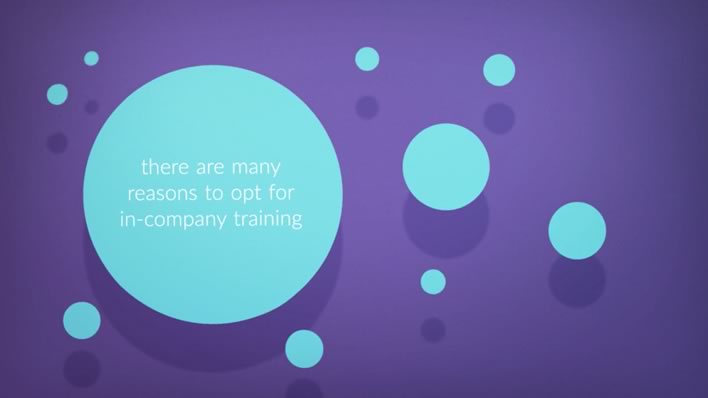
What is Agile Methodology? Your 5-Minute Guide
Originally published December 2017, Updated December 2021
You have probably heard the terms “agile methodology”, “agile project management”, and “becoming more agile” cropping up more and more often over the past few years.
Agile has grown - and continues to grow - rapidly in popularity throughout all industries due to its positive attitude to change and early and frequent delivery of value.
We have compiled this article to answer to the question, "What is Agile Methodology?", along with other frequently asked questions.
Our goal is to give you a solid, easy-to-digest introduction to agile, along with some helpful resources and starting points for continued learning.
You will find everything you need to know in order to decide whether agile could be a beneficial project management methodology for your career, your team, or your business.
Get a PDF Guide to the Agile Certification & Courses
You can instantly download our helpful PDF Guide to Agile and Scrum courses and certification to help you get started.
This guide includes an introduction to the different courses and certifications we offer.
Jump to Any Section of the Article:
What is Agile? A Quick Definition…
Before we dive into the details, let’s try to sum the agile methodology or philosophy up in two sentences:
Agile is a flexible, change-friendly approach to managing projects. It is designed to deliver value early and consistently throughout a project’s lifecycle.
It already sounds appealing, but this definition hardly scratches the surface. Let’s take a deeper dive into agile’s benefits, characteristics, and inner workings.
Origins of Agile Methodology
Although it’s used almost everywhere now, agile originated in the software development sector. A quick Google search today will continue to pull in a lot of software-related results.
With its changing priorities and often difficult-to-define requirements, software development has always required a more iterative way to work on projects.
As far back as 1957, developers had been trialling different forms of flexible project management.
By the turn of the century, the industry was crying out for a more adaptable, streamlined way of handling projects. Here is where the now-famous Agile Manifesto comes in...
The Agile Manifesto
A group of 17 developers met in Oregon in 2000, and then again in 2001 in Utah to brainstorm a more iterative approach to software development.
As a result of these summits, The Agile Manifesto was published in 2001. It has become the foundation of all agile practices.
The Agile Manifesto outlined 4 values and 12 principles, which guide all agile projects.
Good to Know: Agile Methodology Applies Everywhere
It's important to note that this style of managing projects is much more relevant to every other sector than it initially appears.
What began in IT has become incorporated into every area of business and industry over the past 20 years.
Agile methodology's intuitive, adaptive style makes it a natural choice for many different kinds of projects.
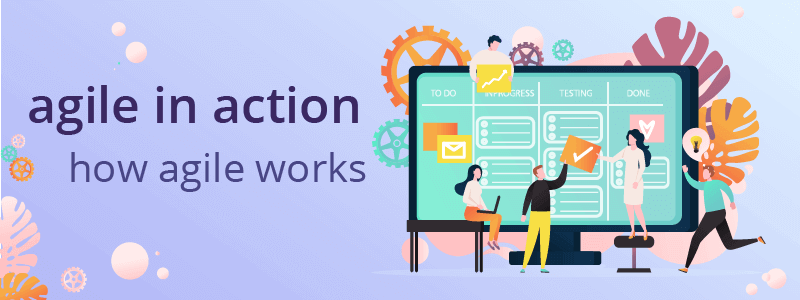
4 Values of Agile
The 4 values of agile state what is most essential to an agile way of thinking.
Again, please do bear in mind that although these values were created for software development – and therefore include industry-relevant terms – they are now applied to projects in every industry.
Here are the 4 values of agile in their original wording, with our translation of how this applies to a broader range of projects:
1. “Individuals and Interactions over Processes and Tools”
While processes and tools are certainly required in agile methodology, people and communication are of much higher importance.
Continual communication and collaboration is essential for responding to changes and finding the wisest paths to take in order to progress the work.
The team and individuals within the team are trusted and empowered to get the job done well.
2. “Working Software over Comprehensive Documentation”
You can read this as “a working product” or “a service that meets requirements” if you are outside the IT sector.
This value outlines the importance of not becoming bogged down in detail, and of not losing focus on the goal of delivering a high quality, functioning product or service.
3. “Customer Collaboration over Contract Negotiation”
This value advocates a high and continuous level of stakeholder engagement.
In conventional project management, a stakeholder is usually involved at the beginning and end of a project with set interactions at periodic intervals throughout.
Agile methodology focuses on regular collaboration with the customer to ensure any changing requirements are considered and incorporated.
4. “Responding to Change over Following a Plan”
Having a plan is great. Being ready and able to adjust that plan to respond to changing requirements or unforeseen circumstances is even better.
This characteristic is at the heart of the agile methodology. In fact, when you think about it, this is truly the most practical way to address most tasks.
12 Principles of Agile
As with the 4 Values above, the 12 Principles were written with software development in mind. We have paraphrased them here to fit a broader scope of industries and their priorities.
- Customer satisfaction is the top priority of an agile project. This is achieved through continuous delivery of value.
- Agile has a positive, welcoming attitude to change at all stages of a project. In fact, agile processes are designed to utilise change as a competitive advantage for the customer.
- The early and frequent delivery of value is a high priority for any agile team.
- Daily communication between the project team and stakeholders is vital.
- A motivated project team and stakeholders are at the core of an agile project. Provide the support and right environment to get the job done. Trust them to get there.
- Where possible, face-to-face conversations are emphasised as the most efficient and productive way to communicate.
- A working product or excellent service is the true mark of progress.
- Agile must be sustainable, meaning that the pace of development and progress could be maintained indefinitely.
- Maintain high standards of quality on all work delivered.
- Keep it simple.
- Self-organising teams are the most effective teams.
- The team reflects on how they can work more efficiently on a regular basis, and works to implement changes to act on this.
6 Defining Characteristics of Agile Methodology
As you may have understood from the values and principles above, there are certain characteristics that are central to an agile project:
1. People First
This is communicated in the very first of the 4 values.
Agile empowers the people working on the project to take ownership of their role within the team, contribute ideas, and suggest solutions for roadblocks.
2. Collaboration
Regular communication is a crucial part of any agile project.
The team have short daily meetings to update on progress, identify current or potential obstacles, and offer solutions.
3. Change-Friendly
Adaptiveness is probably agile’s best-known characteristic.
Most often nowadays, we work in environments where project requirements can - and do - change regularly, usually requiring a rapid response.
Agile is designed to respond positively and effectively in these situations.
4. Value Driven
Delivering productive results regularly from an early stage of the project’s lifespan:
- marks the progress made
- can often provide some usable elements to the customer / stakeholder
- facilitates insights into what’s working and what’s not working
5. Visibility
The daily level of communication and collaboration between the team and with stakeholders gives everyone involved a clear level of visibility on all aspects of the project.
6. Sustainability
As principle number 8 outlines, agile is designed to be indefinitely sustainable.
It is a methodology structured to support productivity while avoiding burnout.
6 Key Benefits
“Agile enables you to respond quickly and positively to change within a project's requirements. It facilitates delivering value early and consistently throughout.”
That is a very brief synopsis of the benefits found with this methodology. If we're looking for more detail, here are 6 important benefits of agile and the way it works:
Responsive: Adapt to Change with Ease
Agile suits projects with hard-to-define parameters or a likelihood of changing requirements. As we have read, one of its 4 core values is “Responding to Change over Following a Plan”.
This lowers a project’s risk and increases your team’s ability to deliver the best product or service to match the customer’s needs.
Clearer Ownership
Unlike conventional project management, agile does not rest all responsibility on a single project manager’s shoulders.
The team shares responsibility, enabling greater clarity in ownership and facilitating better focus for each team member.
More Effective Problem Solving
Frequent communication - both within the team and with all other stakeholders - enables re-prioritisation when necessary.
It also facilitates the ability to easily troubleshoot any issues or obstacles that arise.
Happier Stakeholders
As you know by now, regular delivery of value, collaboration, and clear visibility for all are core elements of agile.
Being part of the regular communications loop combined with opportunities for input, and seeing results from an early point makes for more positive stakeholder relationships all round.
Lower Risk
Greater Visibility = Better Control = Lower Risk
Better communication combined with smaller delivery cycles gives everyone involved the ability to handle change, avoid risk, and create realistic budgets and timeframes.
Better Teamwork
Collaboration, clearer ownership, and the sense of empowerment the “people first” approach brings all contribute to better teamwork and high morale levels.
When your team is in sync, your project runs more smoothly and delivers better results.
Agile outside software development
Despite having been created in response to a need for better software development, agile has become increasingly relevant - and widely adapted - in almost every single sector worldwide.
Who Uses Agile?
Here is a small cross-section of the industries using agile methodologies today:
- Construction
- IT / Software
- Marketing
- Design
- Government Agencies
- Finance
- Education
- Engineering
What kinds of projects are suited to agile?
If you are curious, but wondering how useful this style would be for your current or upcoming work, take some time to think about the kinds of projects you work on.
Typically, agile works best for projects that have at least one of the following elements:
- changing requirements (or the potential or change)
- a need for early value delivery
- tight deadlines
- complex projects
- unusual or unique projects
If your project ticks any (or all!) of those boxes, agile could be the most efficient methodology to use.
Further reading:
The two articles below are excellent resources for further reading on the kind of projects that work best with an agile approach:
Agile and Scrum
What is the difference between Scrum and Agile?
The terms “scrum” and “agile” are often used interchangeably. It is completely understandable if you wonder whether they are, in fact, the same thing.
Scrum is a way of implementing agile. You use a scrum framework in order to uphold the values of agile.
To learn more about this, we recommend reading our article, "Agile vs Scrum.
Agile Frameworks
Scrum is certainly the most popular agile framework, but it is by no means the only one.
There are many ways to apply agile values and thinking to a project using slightly different approaches.
You will learn about several of the most widely adopted approaches or “frameworks” during most agile courses.
Here are the 6 most prominent frameworks:
- Scrum
- Kanban
- Extreme Programming (XP)
- Feature Driven Development (FDD)
- Crystal
- Dynamic Systems Development Method (DSDM)
Take a Closer Look
We recommend taking a few minutes to read our article “Understanding Agile Frameworks” to learn a little more about each of these frameworks.
If you’re already familiar or experienced with “traditional” (also known as “predictive”, “conventional”, or “Waterfall”) project management, you might be wondering where agile fits in with your work.
In recent years, we have seen a growing trend of project managers opting for a hybrid of both traditional and agile methodologies.
Given the faster pace and changeable nature of projects in all sectors these days, a hybrid mix of agile methodologies and a more conventional framework can be game-changing for your results.
Choosing to combine your existing experience and qualifications with adaptive knowledge and certification (agile or scrum) opens up exciting new possibilities for your initiatives.
You can find further reading on this subject in our "Advice and Resources" section below.

Learning to apply an agile methodology
Agile methodologies can yield outstanding results, but only if understood and implemented correctly.
Half-heartedly adopting one or two of the principles will only get you so far, and may even hamper your effort to become more “agile”.
We have seen the best results from teams and companies that have taken the time to study and train in agile and scrum methodologies.
Getting trained and certified doesn’t require a huge investment of time and money.
Training ensures that you have the confidence, credibility, and ability to implement agile processes accurately.
Our 3 most popular Scrum and Agile courses…
Agile Master Certified: A Comprehensive Understanding
Self-Led E-Learning - €399 – Exam & Certification Included
If you want to gain a clear and detailed understanding of agile and how it works, beginning here is a wise choice.
This self-led, e-learning course enables you to get to grips with agile on your own schedule. You can begin immediately and work through the course material at your own speed.
What's Included with our E-Learning Course?
- 180-day access to our online learning platform
- All course materials: training videos, PDF textbook, chapter tests and progress tracker, glossary, case study
- Your online Agile Master Certified (SAMCTM) exam
- Certification costs
- Bonus Material: Scrum Fundamentals Certified – online course + certification. 10+ hours of additional material providing you with a more detailed introduction to Scrum.
There are no eligibility requirements for this course. It is suitable for anyone with an interest in learning about agile.
You will achieve an internationally recognised Agile Master Certified (SAMCTM) qualification.
Scrum Master Certified (SMCTM): Learn the role of Scrum Master
Live Virtual or Self-Led E-Learning - From €399 – Exam & Certification Included
If you’re interested in working in, or already work in a Scrum-focused environment, you could begin here.
Scrum Master is perhaps the best-known role in responsive project management. It is a key function for any Scrum project.
We offer this course as both self-led, e-learning and as a live, 2-day, trainer-led course.
Both options include:
- 180-day access to our online learning platform
- All course materials: training videos, PDF textbook, chapter tests and progress tracker, glossary, case study
- Your online Scrum Master Certified (SMCTM) exam
- Certification costs
- Bonus Material: Scrum Fundamentals Certified – online course + certification. 10+ hours of additional material.
Understand the Role of Scrum Master
Learn more about what it means to be a Scrum Master in our helpful guides, “What is a Scrum Master?” and “Why Become a Scrum Master?”.
Scrum Product Owner Certified (SPOCTM): Become a certified Scrum Product Owner
Self-Led E-Learning - €399 – Exam & Certification Included
If you have previously carried out the traditional role of product owner in projects, or are interested in that role, this is the course for you.
Scrum Product Owner is available as a self-led, e-learning course and as with our other courses, it includes:
- 180-day access to our online learning platform
- All course materials: training videos, PDF textbook, chapter tests and progress tracker, glossary, case study
- Your online Scrum Product Owner Certified (SPOCTM) exam
- Certification costs
- Bonus Material: Scrum Fundamentals Certified – online course + certification. 10+ hours of additional material.
Understand the Role of Scrum Product Owner
Our 3-minute article, “What is a Scrum Product Owner?” can offer you further insights into this role and whether it’s a good fit for your project management career.
Which Course is Right for You?
If you're not sure which course is the right fit for your Agile training needs, we can help.
You can reach our experienced consultants by calling Freephone 1800 910 810 or Dublin 01 861 0700 during office hours.
Alternatively, use the "Which Course for Me?" button below to ask us online.
Using Agile in your Organisation
If you’re interested in developing an agile culture in your team or business, in-company training is a very effective solution.
By opting for this type of training, you will get:
- a customised programme, tailored to suit the style and goals of your business.
- flexible delivery: you choose the dates that work best for your schedule and the training style (online or in-person) that meets your team’s needs best.
- the most cost-efficient way to train several candidates at once.
- consistency in knowledge and skills throughout your team, department, or organisation.
We deliver agile and scrum training in businesses of all sizes and to participants from every industry.
Our speciality is custom programmes that support developing practical skills and confidence in agile with a progression to certification option available.
Get in touch with us to discuss the best way of introducing agile or scrum within your workplace.
Advice and resources
Our team is always available to answer your questions on agile methodologies and offer guidance on the right training choice for your career.
You can reach us by phone (Freephone 1800 910 810) or by asking a quick question online.
Further Reading
- A PDF Guide to Agile & Scrum: download and keep our detailed guide. This guide includes the information in this article, plus additional material on choosing the right course.
- “What is Scrum?” is a recommended follow on from this article. Our introduction to Scrum naturally follows on from what we have covered here on agile.
- Is Agile Right For You?: 10 questions you should ask yourself to determine whether agile will benefit your project work and career development.
- Predictive and Adaptive Project Management: Read about how adaptive (agile) approaches to managing projects differ from more traditional methods.




